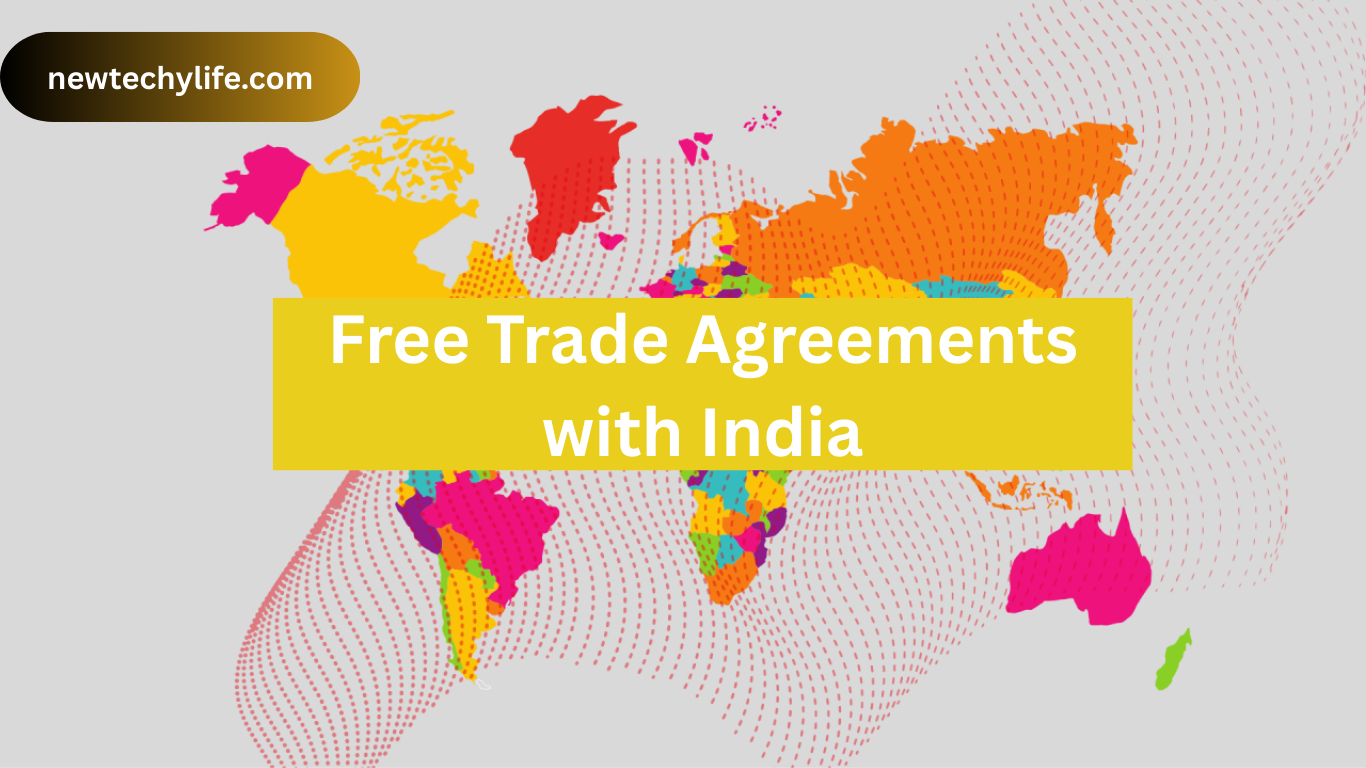Which Countries Have Free Trade Agreements with India?
India, one of the largest economies in the world, has actively pursued Free Trade Agreements (FTAs) to enhance its global trade and economic outreach. These agreements are strategic tools that facilitate easier market access, lower tariffs, and stronger economic cooperation between nations. Over the years, India has signed several bilateral and multilateral FTAs with countries and trading blocs around the world.
Understanding Free Trade Agreements (FTAs)
What is a Free Trade Agreement?
A Free Trade Agreement is a pact between two or more nations to reduce or eliminate trade barriers such as tariffs, import quotas, and export restrictions. The aim is to promote trade and investment by offering preferential access to each other’s markets.
Types of FTAs India Signs
India generally signs two types of FTAs:
- Bilateral FTAs: Agreements between India and a single country.
- Multilateral/Regional FTAs: Agreements between India and a group of countries, usually as part of a regional bloc.
List of Countries with Free Trade Agreements with India
India has both operational FTAs and agreements under negotiation or review. Below is a list of countries and regional blocs with which India has signed active Free Trade Agreements:
Bilateral Free Trade Agreements (Operational)
- Sri Lanka – India-Sri Lanka Free Trade Agreement (ISFTA) – Signed in 1998, operational since 2000.
- Bhutan – India-Bhutan Trade Agreement (1972, revised 2006).
- Nepal – India-Nepal Treaty of Trade (2009).
- Afghanistan – India-Afghanistan Preferential Trade Agreement (2003).
- Chile – India-Chile Preferential Trade Agreement (2006, expanded 2017).
- Japan – India-Japan Comprehensive Economic Partnership Agreement (CEPA) – Effective 2011.
- South Korea – India-Korea Comprehensive Economic Partnership Agreement (CEPA) – Effective 2010.
- UAE – India-UAE Comprehensive Economic Partnership Agreement (CEPA) – Effective 2022.
- Australia – India-Australia Economic Cooperation and Trade Agreement (Ind-Aus ECTA) – Effective 2022.
- Mauritius – India-Mauritius Comprehensive Economic Cooperation and Partnership Agreement (CECPA) – Effective 2021.
Regional/Multilateral FTAs
- ASEAN – India-ASEAN Free Trade Agreement (2009 for goods, 2015 for services).
- SAFTA – South Asian Free Trade Area (including Pakistan, Bangladesh, Bhutan, Maldives, Sri Lanka, Nepal, and Afghanistan).
- MERCOSUR – India-MERCOSUR Preferential Trade Agreement (includes Argentina, Brazil, Paraguay, and Uruguay) – Effective 2009.
- APTA – Asia-Pacific Trade Agreement (includes Bangladesh, China, Laos, South Korea, and Sri Lanka).
India’s Active Free Trade Agreements
| Partner Country/Region | Agreement Name | Year Signed | Type | Status |
|---|---|---|---|---|
| Sri Lanka | ISFTA | 1998 | Bilateral | Operational |
| Bhutan | Trade Agreement | 1972/2006 | Bilateral | Operational |
| Nepal | Treaty of Trade | 2009 | Bilateral | Operational |
| Afghanistan | PTA | 2003 | Bilateral | Operational |
| Chile | PTA | 2006/2017 | Bilateral | Operational |
| Japan | CEPA | 2011 | Bilateral | Operational |
| South Korea | CEPA | 2010 | Bilateral | Operational |
| UAE | CEPA | 2022 | Bilateral | Operational |
| Australia | ECTA | 2022 | Bilateral | Operational |
| Mauritius | CECPA | 2021 | Bilateral | Operational |
| ASEAN | FTA | 2009/2015 | Multilateral | Operational |
| SAFTA | SAFTA | 2006 | Regional | Operational |
| MERCOSUR | PTA | 2009 | Multilateral | Operational |
| APTA | APTA | 1975/2005 | Multilateral | Operational |
Features and Benefits of India’s FTAs
1. Market Access
Indian exporters get easier access to foreign markets through reduced tariffs, making Indian goods more competitive globally.
2. Foreign Investment
FTAs often include clauses on investment, boosting investor confidence and inflow of capital from partner countries.
3. Technology Transfer
Bilateral agreements with countries like Japan and South Korea facilitate technology exchange and collaboration.
4. Economic Integration
India’s engagement with regional blocs like ASEAN strengthens regional economic ties and contributes to larger Asian economic integration.
5. Employment Opportunities
Growth in export sectors as a result of FTAs often leads to job creation in industries such as textiles, pharmaceuticals, and information technology.
FTAs Under Negotiation or Review
- European Union (EU) – Ongoing negotiations for a Broad-based Trade and Investment Agreement (BTIA).
- United Kingdom (UK) – Free Trade Agreement under negotiation, expected to conclude soon.
- Canada – Comprehensive Economic Partnership Agreement (CEPA) negotiations are ongoing.
- Israel – Talks for a Free Trade Agreement have resumed.
- Gulf Cooperation Council (GCC) – Negotiations in progress for a FTA with the six-nation bloc.
Challenges and Considerations
- Trade Deficits: In some cases, FTAs have led to increased imports without corresponding export growth, creating trade imbalances.
- Non-Tariff Barriers: Issues like quality standards and regulatory practices can still act as trade barriers.
- Domestic Industry Concerns: Local industries, especially MSMEs, sometimes face increased competition from imports under FTAs.
Conclusion
India’s Free Trade Agreements are crucial for expanding its economic footprint globally. These agreements offer a structured way to engage in trade liberalization, attract foreign investments, and deepen bilateral and regional cooperation. As India continues to negotiate with more countries, including the EU and UK, its trade landscape is set to become more integrated and globally competitive.
